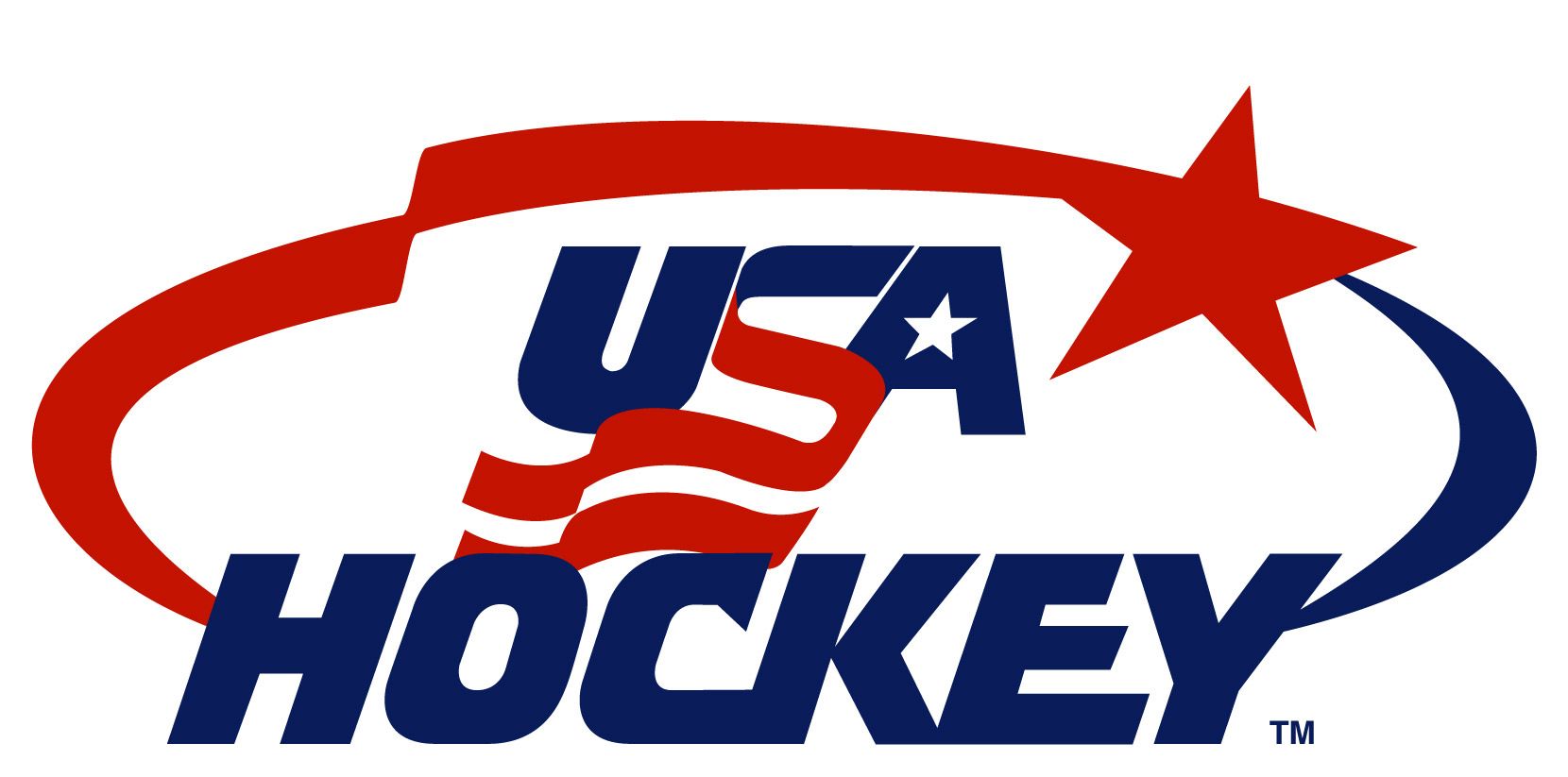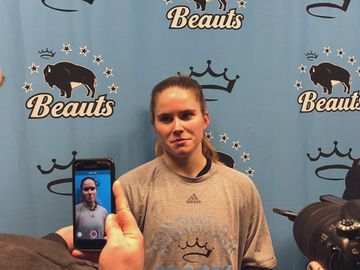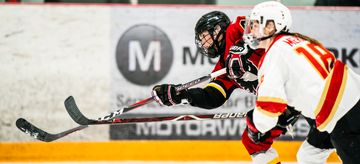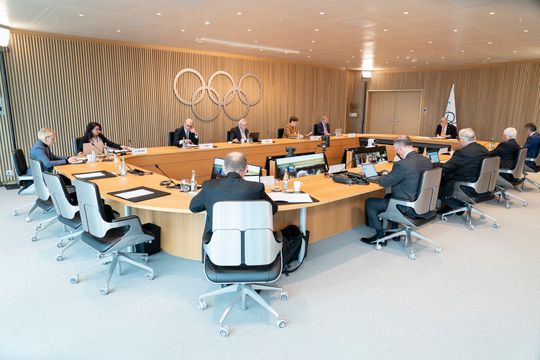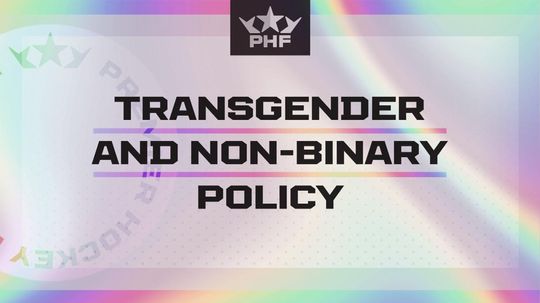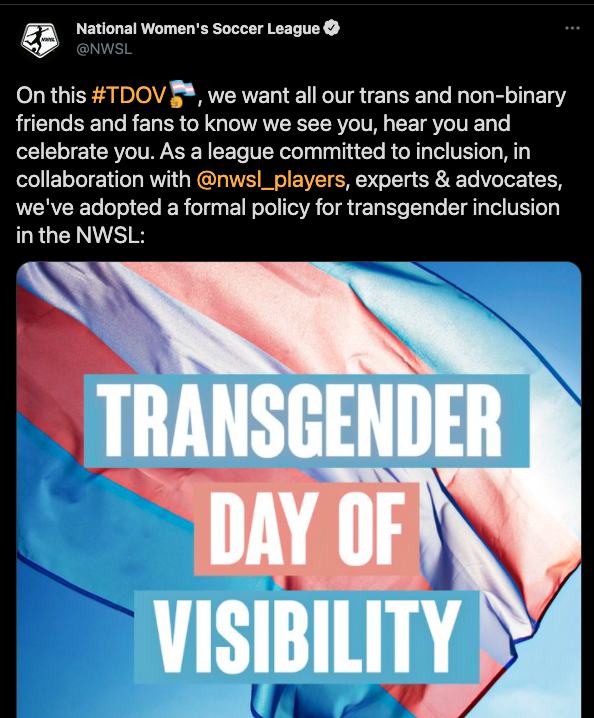This past week, USA Hockey released its new regulations for transgender and non-binary inclusion. Evaluating this policy requires an acknowledgement of the highly transphobic times in which it was released. It comes the same week as the United States Supreme Court upheld President Trump's transgender military ban and in which a South Dakota bill that would restrict trans student athletes from participating in sports other than those of their assigned gender was put to a vote. While the bill was defeated, it is simply the most recent in a long line of transphobic bills at the state level designed to restrict trans students' access to public life with the goal of legislating trans people out of existing. Depressingly, it will not be the last such effort. At the state and federal level, the United States has declared an open season against trans folks, and trans kids are bearing the brunt of this bigotry. These bills often target trans athletes and sport is one of the most prominent battlegrounds for trans exclusion.
In this context, it is easy to see why USA Hockey's recently ratified rules are being celebrated. The policy does have strengths. Crucially, it explicitly includes non-binary athletes. Non-binary athletes have been ignored and forgotten by most gender inclusion policies. While some might argue non-binary athletes are included under existing transgender inclusion policies (where such policies exist), the lived experience of many gender diverse folks illustrates that gender policies that only refer to binary gender do not include those who exist outside of (cis)binary gender. Non-binary athletes have a right to play hockey. Non-binary people should not be an afterthought in the sports world, and that includes regulations.
The new rules acknowledge that recreational competition should not have the added barrier of specific medical restrictions. This acknowledgement puts USA Hockey's policy among the leading gender inclusion policies in the sports world. Gender diverse people should be able to make their own decisions about transition according to their own needs. Sports regulations requiring specific medical treatments are unjust and ignore the lack of access to many necessary medical treatments for gender diverse individuals. They show little concern for the individual athlete and their needs.
Gender diverse folks have variety of medical needs, some meet the specific regulations set out in many gender inclusions guidelines, some exist outside of those regulations. All are valid. But what is also valid is individuals who do not wish to or need to undergo medical transition. By removing medical barriers to recreational play, USA Hockey acknowledges transgender and non-binary inclusion must mean accepting the infinite diversity of those of use who exist outside of cisnormative standards.
But, there are still many problems with these new regulations. While the policy doesn't require a set of specific medical treatments to make gender diverse bodies adhere to cis norms for recreational play, it still asks players for medical support, and, in the case of youth players, parental support. Gender diverse athletes are required to submit a letter stating their gender. While this might seem like a necessary and perfunctory step, this step is a lot harder for minors to complete. This letter is only required of trans girls and women and amab non-binary folks playing girls' and women's hockey. Those who are minors are required to have a letter from their parent(s)/guardian(s) stating their gender identity. While I admit that it would be difficult for a child to play hockey without the support of her parents in terms of cost and travel, when coupled with a letter from a medical professional "confirming gender identity" serves to undermine the agency of the athlete.
Requiring confirmation from a medical professional is simply an unjust tax on trans girls and women who play hockey. Medical confirmation requires medical assessment; medical assessment requires significant money. Each doctor has different levels of engagement with a gender diverse individual before they're willing to write such a letter. To tell trans girls and women and amab non-binary folks they can play but knowing it could cost hundreds and potentially thousands of dollars to obtain depending on their provider is unjust and criminal. It reveals a continued refusal to acknowledge the financial pressures and barriers many face when considering whether to play hockey. It ignores the financial disparity many trans people live with and assumes an economic agency many in America simply do not enjoy.
This policy places medical restrictions on the inclusion of trans girls and amab non-binary kids who play 14U to 19U Tier 1 and Tier 2 girls hockey. USA hockey considers these "teams to be at a level where additional competitive concerns should be considered in evaluating eligibility." In this section, USA Hockey creates just another "fair play" doctrine coded to ensure cis success and superiority.
Trans girls and amab non-binary folks who play on these teams are required to under go at least one year of "testosterone suppression therapy" confirmed by a medical professional. This is problematic and discriminatory for many reasons. "Testosterone as unfair advantage" is a dubious belief in the sports world I've explored at length here and here and here. The phrase "testosterone suppression therapy" is vague and doesn't specify whether this requirement would be met by puberty blockers or if other treatment would be required. Regardless, hormone therapy for gender diverse folks is expensive and often not covered by insurance plans. This stipulation adds an additional "trans tax" to gender diverse inclusion that can run into the thousands of dollars. Even if the cost can be covered, these hormones are difficult to obtain and access differs across the United States. Based on the text, USA Hockey does not care that its rules are financially punitive for gender diverse folks.
On paper, the rules governing the participation of trans boys and afab non-binary people seem considerably more positive. These kids can continue to play girls hockey, as long as they do not undergo testosterone hormone therapy. If undergoing testosterone therapy, these athletes can only participate in "classifications not restricted by gender" (boys' and men's hockey). However, the apparent inclusion on trans boys and afab non-binary folks pivots on several harmful lies.
The first of these is the idea that anyone can participate in "classifications not restricted by gender." In these regulations, USA Hockey makes clear that it has two gender classifications: "The vast majority of USA Hockey's programs, regardless of whether considered competitive or recreational, are co-ed and not restricted by gender, and therefore all hockey players are eligible to participate regardless of birth gender, gender identity, transgender status and other forms of gender expression."
This is just straight up bullshit from USA Hockey. While historically girls did, on occasion, play on boys teams and while this is still the case today, the vast majority of these teams are comprised of cis boys and cis men and they essentially function as teams for cis boys and cis men only. They are not co-ed. They do not habitually accept girls and they certainly do not accept gender diverse athletes and they most definitely do not accept any number of girls and gender diverse folks, and, as a result, cannot be considered truly co-ed. USA Hockey is suggesting that programs designed to prioritize cis boys, with the goal of developing cis boys, are accepting of gender diversity. We know they're not. This places the needs and experiences of cis boys as the norm and as priority. USA Hockey's programs for girls and women are, consequently, specialized, secondary, and lesser. The sports played by cis boys and cis men are the norm, the games played by girls and women must be "protected." This arrangement harms gender diverse folks (and it's not great for cis people either!) because the "protected" status of girls and women's sports is why trans girls and women are subjected to any number of dubious claims of unfair advantages.
But it also harms trans boys and afab non-binary folks. By reiterating that its boys teams are actually "co-ed" USA Hockey gives those teams and their parent leagues permission to remain the same. Boys' and men's hockey culture is deficient, and women's and girls' hockey follows in a similar pattern. It is filled with racism, sexism, homophobia, and transphobia. USA Hockey offers no encouragement to improve this. Such an environment is not designed for the acceptance of trans boys and non-binary people. Policies like this work from a framework that assumes women's bodies, and perceived afab bodies, are inherently lesser. USA Hockey doesn't care about making room for trans boys because it doesn't think trans athletes can compete with cis boys and men.
These regulations follow a pattern established by other gender inclusion policies that allow trans boys and men to participate in men's sports "without restriction." That seems inclusive, but it's not. Built into that regulation is the belief that few, if any, trans dude athletes will be able to compete with their cis counterparts. By failing to provide guidance on culture change, clear directives, or concrete language legislating for co-ed inclusion in what are inherently boys and men's leagues, USA hockey has left trans boys, men, and afab non-binary players with few practical options for inclusion, acceptance, and advancement.
USA Hockey has proposed an inclusion policy that acknowledges the existence of non-binary athletes and their inherent right to play. However, by highlighting its "co-ed" programs that are, in reality, boys programs, USA hockey has acknowledged non-binary athletes but still requires them to fit strict binary gender categorizations. We need true co-ed sports organizations and we need these organizations to prioritize the needs of athletes who do not fit the gender binary. USA Hockey failed to do this.
By creating a separation between recreational play and competitive play, USA Hockey makes it harder for trans athletes to excel. There will be trans athletes who meet the regulations to play in girls' and boys' competitive teams. And they deserve their places. But many more won't, and that's the point. We call regulations governing gender diverse participation in sports "inclusion" policies but that's always been a tidy euphemism. Currently, these policies are designed to restrict more than they are designed to include. The subtext is only those trans women who meet very strict definitions of womanhood can compete. The implicit understanding is trans men have "lesser" bodies, "women's" bodies and will never be able to compete successfully against the "superior" cis male form.
These regulations force trans and non-binary athletes to change to fit cis norms, values, and needs. There is no suggestion that cis people must adapt and change to accommodate actual trans inclusion. These rules are written by cis people, for cis people. In general, if gender diverse individuals are consulted their needs and wants are not prioritized. Gender inclusion policies must be created and written by a diverse group of gender diverse people. They must include trans women and men as well as non-binary people. Their decisions should be prioritized and emphasized, not subject to cis approval. Until this happens, policies like USA Hockey's gender inclusion policy, will always serve the needs of the cis majority first.
But these policies won't change if they aren't critically examined. Gender inclusion policies, when commented on at all by mainstream sports media sites, are never rigorously analyzed. This is not inherently bad as time and time again, these outlets have proved incapable of analysis outside the cis straight white male lens. But these organizations also make zero effort to find individuals more suited to the role. Gender diverse athletes and commentators are never asked for a sound bite or post by ESPN or Sportsnet when it comes to new gender policy, whether it's USA Hockey's new policy or U Sports' new regulations.
There are so few trans and non-binary athletes interviewed at all and such a small number of people working toward gender diverse inclusion in sports that the complexity of the gender diverse athlete's sound bite gets reduced to positive reinforcement, no matter how damaging the changes are. Simply put, our sports landscape has no space for a trans, non-binary, or gender diverse athlete who will be critical of such policies, who will be specific about the ways in which they are discriminatory, or who refuse to settle for slow, incremental progress.
It is vital then, that queer sports media creates space for a full range of opinions from gender diverse folks on the discrimination we experience, the ways we are exploited, as well as the ways we are included and accepted. Given the paucity of queer sports media in particular and queer media more broadly, it is all the more devastating when queer sports sites provide the type of analysis mainstream networks would gobble up without upsetting too many viewers or readers.
When leading queer sports sites such as Outsports review gender inclusion policies, they also come up with insufficient analysis. Outsports tends to quote one or two trans professional athletes, at least one of whom is Chris Mosier, and they generally commend the new regulations for making progress. This is not to minimize the Mosier's advocacy or the work done by any other gender diverse professional athlete. Given the current social and political climate, as outlined at the start of this piece, as well as the lack of space afforded gender diverse folks for legitimate critique, it makes sense that prominent gender diverse sports voices celebrate these policies. For many of us, something is indeed better than nothing. However, athletes and advocates who currently rely on these half-measures for their careers to continue are simply not positioned to be critical of these policies. It is crucial that gender diverse sports writers cover these topics in queer publications.
However, when cis queer folks write about gender inclusion policies, the following occurs:
Advocates of trans inclusion in sports will certainly point to the mandate of testosterone suppression for girls ages 14 to 19. Many teens have are just figuring out their gender identity and expression at that age, let alone engaging in a year of hormone therapy.
Yet the positives seem to outweigh the concerns. USA Hockey is getting the praise of trans athletes and advocates, and that's a welcome development.
In one sentence, Outsports has insufficiently summarized some of the problems of the regulations and resolves those problems with 8 inadequate words. The piece wraps with what is important to cis queer voices about gender diverse inclusion: the appearance of inclusion, the emphasis on consensus, the appeasement of non-queer voices.
We are never going to get better policies if we prioritize the readiness of cis people (including queer cis people). The majority is never ready for the full citizenship, the full membership, the full acknowledgement of the minority. We must push anyway.
